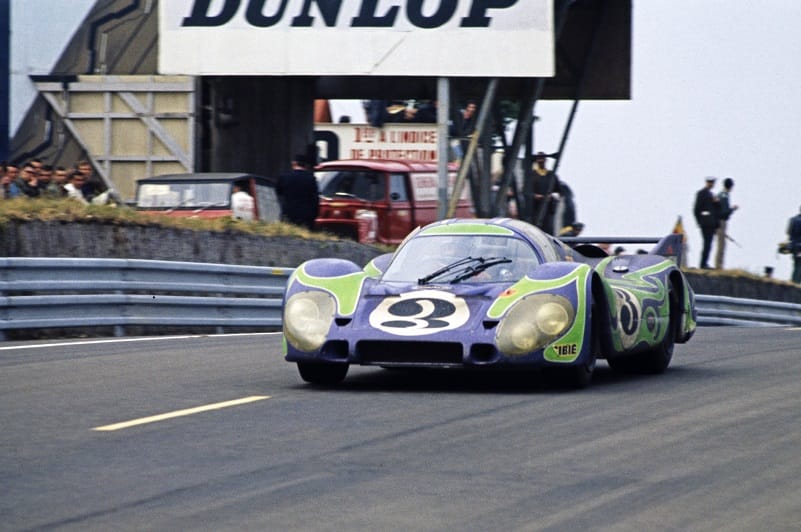This year sees Porsche turn 90 years old, having being founded in Stuttgart back in 1931. Through the near century of car production, the German brand has made a strong name for itself, being seen as one of the best GT car producers in the world. But Porsche’s legacy is not only about their key developments in production cars, but their motor racing history, and the silverware that lays in their wake to underline their successes.
Although production of the Porsche motor cars started in 1931, it would be another two decades before any were seen on a race track. Not the fastest cars on the tack, Porsche kept an advantage against the competition by producing low capacity race cars, meaning that what they lacked in horsepower they could make up through high reliability, low drag, low weight and good handling. In this era, Porsche is best known for their dominance in class, sometimes claiming overall victories against the bigger and heavier cars, in the Targa Florio race: an open road endurance automobile race held in the mountains of Sicily. 1956, 1959, 1960, 1964, and every year from 1966 to 1970 saw Porsche take victory at the Targa Florio with new prototypes that held the edge on their competitors even though their horsepower was a lot less.
Porsche’s focus on light, easy to handle cars over horsepower output placed the marque in good stead as the German manufacturer began to establish its name in the motor racing world. Art Bunker, Bob Holbert, Charlie Wallace and Lake Underwood are noted as Porsche’s ‘quiet giants’ in the United States, as they helped to achieve many of the brand’s successes during the 1950/60s over in America. The quartet were all masters of prototype racing and took Porsches to the top steps of podiums multiple times. One of the most famous American victories for Porsche in this time period was the 1963 Road America 500 overall win in the under two litre RS-60.

By the mid sixties, Porsche were starting to move from tuning their production cars for racing to developing cars designed specifically for racing. The 550, 718, RS and RSK models formed the backbone to Porsche’s racing initiative, showing the world that they were dedicating to the sport of the long run. The 90x series of cars were one of Porsche’s most successful during this time, with the cars moving Porsche from likely class winner to likely overall winners. The progression of Porsche was staggering on the motorsport scene, for the team that had started as having a good shot of winning against the strongest of competition when handling was more important that power output had evolved into one of the ones to watch.
One of Porsche’s most iconic models was developed in the 1960 (introduced in 1963), but this specific car would not become the titan it is known as today until the 1970s.
As Porsche became stronger, so did their competition, and the time finally came for the German car designed to step out of its two-litre engines shoes and into something faster. The production of the four-litre Ferrari P series and the seven-litre Ford GT40 showed Porsche everything they needed to know: they had to start looking at horsepower and making their cars faster. Their first effort was the Porsche 907, that ran a 2.2-litre engine, hitting the racing scene in 1967. But this was just the start, as a year later Porsche’s first three-litre 908 evolution made it to the race track.
The prototype racing rulebook offered Porsche a loop hole in their engine development, and so 1969 introduced the 4.5-litre flat 12 917 that would go on to expand its engine capacity to five litres and 5.4-litres plus turbocharged. It was a step up that Ford nor Ferrari could keep up with, and Porsche became a staple name on the motorsport scene. Not only now did Porsche’s racing cars have excellent handling and remain on the lightweight end of the scale, but now their power output matched or outperformed their rivals.

With the 917 leading the way, the 1970s brought about the era of the 911 Porsche, a model that is still being developed for racing today. This was Porsche’s first mainstream production to racing model, and with the reputation they had built off the back of the 917 it was a huge success. Although always a 911 at heart, the racing model has had a variety of names through its successful racing career.
Its first success was as the original 911, winning the Rally Monte Carlo in 1968, but future successes were just over the horizon. The evolution 911 Carerra RSR claimed victories at Targa Florio, Daytona and Sebring in the mid-1970s, whilst the 935 evolution was the first 911 Porsche to take overall victory at the 24 Hours of Le Mans in 1979. Due to tighter regulations during the 80s, the 911 did not see much racing for the next decade, but the 1990s saw it back on track as the 993. The next in line 996 saw huge success in the late 90s after a water-cooled variant was release for GT3 racing, giving it a supreme advantage over other manufacturer race cars.
In just 40 years, Porsche had developed from an underdog to one of the strongest competitors on track, and with their design initiatives and light weight race cars, it was not a trajectory that was due to slow down.
Stay tuned to TheCheckeredFlag for Part 2 of The Porsche Story: Racing Through Disciplines, where we’ll explore the German brand’s steps away from sports car racing.



